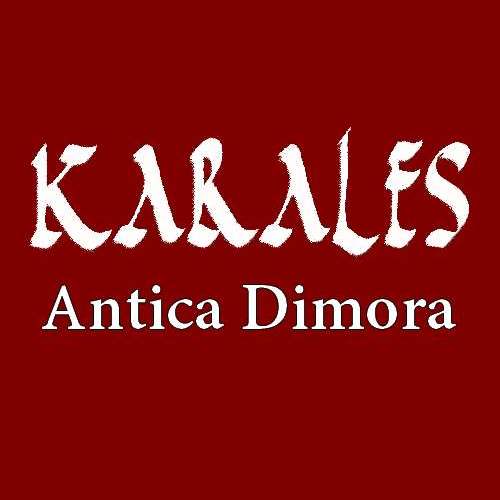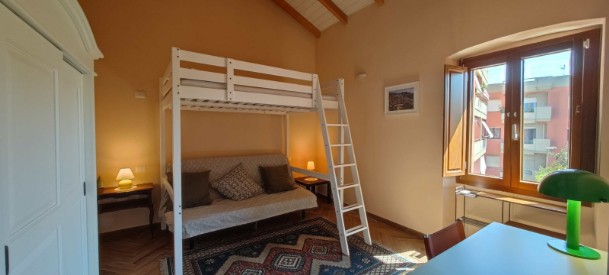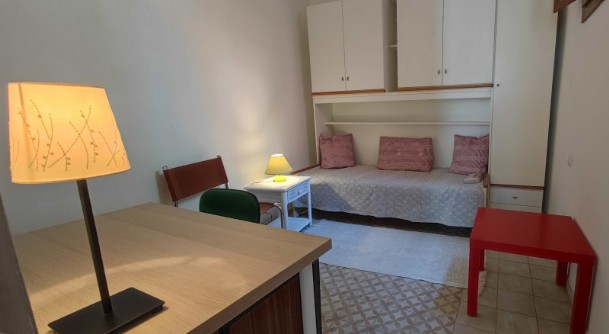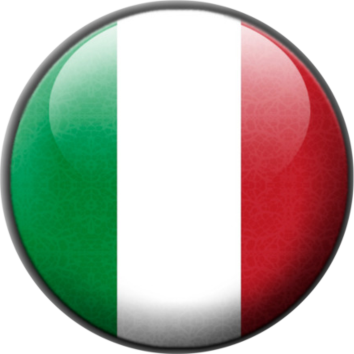Karales
Urbs Libyam contra Tyrio fundata potenti tenditur in longum Caralis tenuemque per undas obvia dimittit fracturum flamina collem; efficitur portus medianum mare, tutaque ventis omnibus ingenti mansuescunt stagna recessu.
Founded by the merchants of powerful ancient city of Tyre facing Libya, the city of Karales extends lengthwise, and a modest hill juts out from the waves, breaking the force of adverse winds. Thus, in the middle the sea becomes a port and in a large inlet, sheltered from all winds, the waters rest.
With these words the Latin poet Claudius Claudianus described the appearance of Roman Karales in the last years of the 4th century. Although brief, a description of singular realism, still valid today for the traveler who comes to the city from the sea.
The history of Cagliari is truly multi-millennial, among the oldest in Italy. Capital of the ancient and glorious Regnum Sardiniae, today the most beautiful island in the Mediterranean, it is a city of great charm, capable of offering a unique combination of culture, art and natural beauty. Located on the southern coast of the island, it is known for its spectacular beaches, its mild climate and its extraordinary historical legacy.
Among the places of greatest interest is the Castle, the historic and ancient neighborhood perched on a hill which offers breathtaking panoramic views of the city and the sea. Here it is possible to walk through the narrow and winding streets, visit the Cathedral of Santa Maria and admire the imposing towers built by the Pisans at the beginning of the 14th century.
The Poetto seafront is one of the largest urban beaches in Europe, with crystal clear waters and fine sand, perfect for relaxing in the sun, going for a swim or practicing water sports.
There is no lack of archaeological sites. Among these are the Roman Amphitheater and the Necropolis of Tuvixeddu, monuments that testify to the historical importance of Cagliari since Punic and then Roman times. The National Archaeological Museum, housed in the magnificent complex of the Cittadella dei Musei, also in the Castello district, exhibits unique finds that tell the thousand-year history of Sardinia.
Local cuisine is another unmissable attraction. The typical Cagliari dishes tell of an ancient culinary tradition, such as fregola with clams, burrida, mixed fried fish from the gulf. What about desserts? Authentic delicacies like Sebadas are unforgettable for the palate, the mind and, above all, the heart.
The markets, above all that of the San Benedetto district, offer a lively food and wine experience with fresh products and local specialties recognized throughout Europe.
Cagliari green city. Not a slogan but an exceptional reality, made up of fascinating natural areas that offer countless opportunities for excursions and thematic visits. Like the Molentargius-Saline Regional Natural Park, with its intact, thousand-year-old ecosystem, where the fossil dunes tell of the prehistoric Poetto beach while the fascinating flamingos look after their chicks, painting the placid waters pink.
Cagliari is a destination that perfectly combines sea, culture and tradition, making it an ideal destination for tourists looking for an authentic and unforgettable experience. Hence:
Welcome to Cagliari!

Karales Antica Dimora
Karales antica dimora is a portion of a typical Campidanese house in "ladiri" raw bricks. The construction material is organic. Like the Roman domus, the Campidanese house is composed of a quadrangular layout with the external walls converging towards the entrance gate. The house is cool in summer and warm in winter; air-conditioned and tastefully furnished, it is equipped with all the comforts you have at home.
The house
Near the house there are:
- Supermarket
- Restaurant
- Bar
- Bank
- Post Office
- Local market
- Bus stop Line M and 8 (connect with Trenitalia station and ARST), QS (connect with Poetto) and QSA (connect with the University Hospital, Quartu S.E.)
Towels and chairs for the beach and umbrella are available on request.
Languages spoken: English, French, Italian
I.U.N. (Identificativo Unico Numerico) L.R. 16/2017 e D.L. 50/2017
R4096
CIN (Codice Identificativo Nazionale) comma 15, art. 13-ter, decreto-legge n. 145/2023
IT092009C2000R4096
Karales Antica Dimora house has a total surface area of approximately 70 m2 and is composed of:
3 bedrooms
- Bedroom 1: 1 Double bedroom
- Bedroom 2: 1 single bed
- Bedroom 3: 1 single bed
All rooms are equipped with air conditioning and TV
1 large and comfortable kitchen equipped with
- induction hob with relative extractor hood
- sink with drainer
- electric oven
- electric coffee machine
- table with chairs
- 2 seater sofa
- air conditioning
1 entrance
1 bathroom with toilet, shower and washing machine
1 panoramic terrace
Free outdoor car parking
Bedroom 1- Double/family bedroom

Bedroom 2 - Single badroom

Bedroom 3 - Single badroom

Reservation
Sites of interest
Karales Ancient residence is a house whose structure dates back to the first decade of the 20th century. Recently restored respecting tradition, it is equipped with all comforts. Located in the historic center of the Municipality of Pirri in Cagliari, it is located a short distance from the places of greatest interest: the National Archaeological Museum, the University, the Monte Claro Park. The port and the State Railways station are just 5 km away while the Elmas international airport is 10 km away.
Visit Cagliari
The Castello District
Characterized by a road network of medieval origin, it houses some of the most important city monuments.
The cathedral of Cagliari. The cathedral of Santa Maria Assunta and Santa Cecilia is the main place of worship in Cagliari, the mother church of the metropolitan archdiocese of the same name. The temple displays a fascinating set of different artistic styles that testify to seven centuries of historical memories. Built during the 13th century in Pisan Romanesque style, it was elevated to the rank of cathedral in 1258.
The Citadel of Giovanni Lilliu Museums
Located in the northern area of the limestone hill on which the Castle stands, today's Citadel is the result of extensive renovations and reorganization of the structures where the Royal Arsenal of the Sardinian Army was once located.
The National Archaeological Museum with the Giants of Mont'e Prama of Cabras is housed here; The National Art Gallery which exhibits works by Sardinian artists from the sixteenth to the twentieth century, works of the Genoese school of the XV-XVIII centuries, Neapolitan and Roman; the "Clemente Susini" anatomical wax museum, among the most interesting anatomical collections existing in the world and finally the Civic Museum of Siamese Art (MAS) named after the Cagliari collector Stefano Cardu.
The Bastion of Saint Remy
Built on the ancient city walls at the end of the 19th century, it owes its name to the first Piedmontese viceroy Filippo Guglielmo Pallavicini, baron of Saint Remy. From its elegant terraces you can enjoy a magnificent view of the Marina District, the port and the Santa Gilla lagoon.
The Marina District
La Marina is one of the four historic districts of Cagliari. The beating heart of the city, the orthogonal urban planning scheme reveals its Roman origins. Stretching around the port, it preserves the climate and scents of the ancient seaside villages. Among historic buildings, ancient churches and small shops it is possible to catch the inviting aromas of the small spice shops. It is certainly the ideal place to spend pleasant evenings by choosing one of the many welcoming restaurants offering typical Cagliari cuisine.
The Monte Urpinu Park
A few steps from the city center, it is undoubtedly the most important park in Cagliari. From its top it is possible to enjoy an incomparable view of the city and the wetland of the nearby Molentargius Saline Park. Walking along its shady paths it is not unlikely that you will encounter swans, turtles and wonderful peacocks that show their elegant tails free.
The Basilica and Sanctuary of Our Lady of Bonaria
The sanctuary of Our Lady of Bonaria, located at the top of the hill of the same name, is the most important place of Marian worship in Sardinia and certainly among the most famous in Italy. Its layout dates back to the first half of the 14th century. The temple houses the wooden statue of Our Lady of Bonaria with the baby Jesus, which arrived from the sea in 1370 in a wooden case with a lit candle. The fame of the miraculous statue immediately spread throughout Sardinia, especially among the sailors who chose it as their protector, to the point that Spaniards out of devotion gave its name to the capital of Argentina, Buenos Aires.
The Hill of Bonaria
Here, on 19 June 1324, the Regnum Sardiniae was born, the Kingdom of Sardinia from which the Italian Republic descends.
The sacred vocation of the hill is attested by the Roman necropolis in use since the 1st century AD. Funerary cubicles with niches for the deposition of cinerary urns and arcosolia with sarcophagi dug into the walls for burials are visible halfway up the hill. In the wake of the sacred and cultic tradition, the hill today hosts the Monumental Cemetery of Bonaria, historical memory of the families and people who once populated the beautiful neighborhoods of Cagliari.


